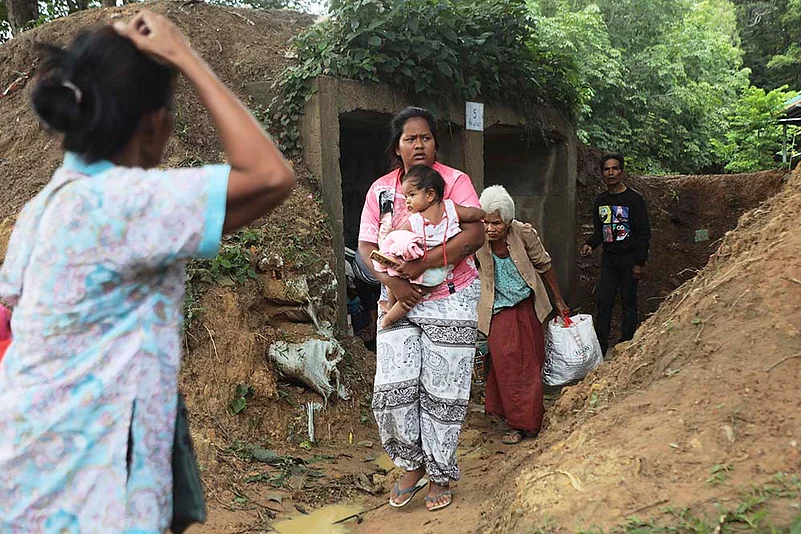Cambodia has urged an immediate and unconditional ceasefire following a third straight day of deadly border clashes with Thailand, as the United Nations Security Council held an emergency meeting to address the escalating conflict.
What began as a long-simmering dispute has now erupted into intense fighting involving artillery, tanks, and fighter jets. The violence has claimed at least 16 confirmed lives, though some international reports put the death toll as high as 32, with both civilians and soldiers among the dead.
The humanitarian toll is mounting rapidly. More than 80,000 people have been displaced, 58,000 from Thailand and over 23,000 from Cambodia, as fighting spreads across multiple flashpoints along the frontier.
In Cambodia’s border town of Samraong, families were seen fleeing in pickup trucks and motorbikes, clutching bags of belongings. “I live very close to the border. We are scared,” said Pro Bak, 41, who was taking his children to a nearby Buddhist temple for safety.
Speaking to reporters after a closed-door UN Security Council meeting in New York, Cambodia’s ambassador to the UN, Chhea Keo, reiterated the country’s call for calm and pushed back against Thai claims that Phnom Penh had triggered the conflict.
“We urge for an immediate ceasefire and a peaceful resolution to this conflict,” said Keo, arguing that Cambodia’s military is smaller and far less equipped than Thailand’s.
Diplomats at the meeting said the Security Council had urged both countries to exercise maximum restraint and seek a diplomatic path forward. No other Council members made public statements after the session.
Exchange of Fire Intensifies
According to the Thai army, fighting resumed early Friday around 4 a.m., with Cambodian troops reportedly launching heavy weapons, field artillery, and BM-21 rocket attacks in three sectors. Thai forces responded with what the military called “appropriate supporting fire.”
On the Cambodian side, officials confirmed a 70-year-old man was killed and several others injured in Oddar Meanchey province. Thai authorities said the conflict has so far killed 14 civilians and one soldier on their side, with 46 others wounded, including 15 troops.
Thailand also accused Cambodia of shelling civilian infrastructure, including a hospital and a petrol station.
In response, Thai authorities closed four key border crossings and put frontline military units on high alert.
Thai foreign ministry spokesman Nikorndej Balankura said Bangkok was willing to resolve the matter through dialogue—bilaterally or with the help of Malaysia, which currently chairs the Association of Southeast Asian Nations (ASEAN).
“We are ready to talk—bilaterally or through Malaysia—if Cambodia agrees,” he said, noting that no response had yet been received from Phnom Penh.
Acting Thai Prime Minister Phumtham Wechayachai added that while the conflict remained contained for now, “if this continues, it could spiral into full-scale war.”
The flare-up marks the most serious escalation in years of border tensions between the two Southeast Asian neighbours, who share an 800-kilometre (500-mile) frontier. Several stretches remain disputed, despite a 2013 International Court of Justice ruling aimed at settling the issue.
Between 2008 and 2011, fighting in the same region killed 28 people and displaced thousands. Tensions resurfaced in May this year after a Cambodian soldier was killed during a patrol incident, triggering sporadic skirmishes that have now escalated dramatically.
Friday’s clashes were reported near at least six locations, including areas surrounding two ancient temples. Thai F-16 fighter jets were deployed in response to Cambodian shelling, as both sides blamed each other for firing the first shots.
With growing calls for calm, the UN and ASEAN are pushing for de-escalation. But as civilians flee and casualties climb, the window for diplomacy may be closing fast.














